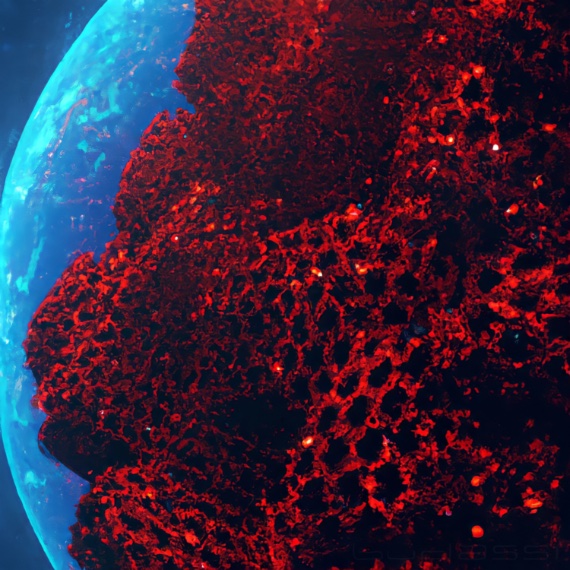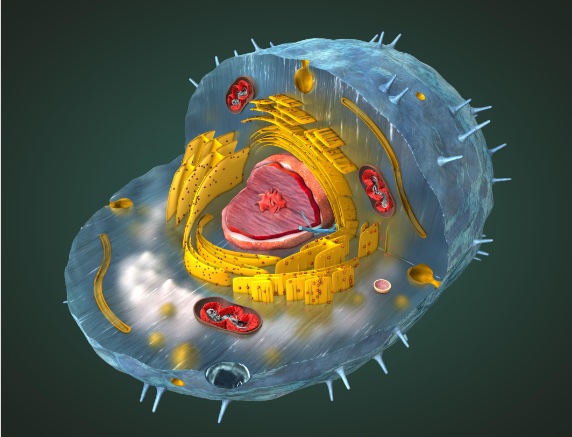One of the most extreme and outrageous hoaxes about the COVID-19 pandemic claims that the messenger RNA (mRNA) used in vaccines is some kind of tool to genetically modify humans, and goes on to say that mRNA is even found in food. The latter is undeniably true since all food comes from living things. And not only is mRNA so essential to the functioning of genes that without it there would be nothing alive on this planet, but it could even be the origin of everything; the first gene was the beginning of life on Earth, and everything suggests that it was not made of DNA but of RNA.

Our genes determine what we are, and also what illnesses we get. But apart from being each person’s individual instruction manual, genes are also a collective record, a kind of coded logbook of the history of the human species and all our biological ancestors up to the so-called Last Universal Common Ancestor, or LUCA, the remote single-celled ancestor of all living things.
The genome of the first living thing
But what happened before LUCA? If we rewind the film of life on Earth even further back to the first living thing and the earlier origins of biology, the picture becomes much fuzzier. There is no way for science to confirm how terrestrial life came into being; all we can do is formulate plausible hypotheses and test their validity experimentally. Unfortunately, we will never know for certain.

What we do know is that the first living thing, a protocell, had a genome capable of replication. So if we could work out how this was possible and how the first gene was made, we would be closer to unravelling the mystery of the origin of life. The problem is that this is a classic chicken-and-egg dilemma. According to the central dogma of biology, the DNA of genes is transcribed into a copy of mRNA, which is translated by molecular adaptors into the proteins that make up the organism. Both these processes and DNA replication, the copying of a genome during cell division, are carried out by proteins called enzymes. Thus, it takes a chicken, in this case a gene, to create the egg, mRNA that produces proteins. But it requires an egg, the proteins, to hatch a chicken, the genes.
The enigma of this circle without beginning or end led Francis Crick, co-discoverer of the structure of DNA, to imagine a controversial solution: directed panspermia, “the theory that organisms were deliberately transmitted to the earth by intelligent beings on another planet,” wrote Crick and chemist Leslie Orgel in 1973. It was Crick who established the central dogma of biology. The mutual dependence of DNA, RNA and proteins made it impossible to propose that one of these components could have appeared first, so Crick and Orgel suggested that life must have originated on some other world where there was “a mineral, or compound, of crucial catalytic importance” to initiate the cycle.
The RNA World theory
Fortunately, that catalyst was found right here on Earth: RNA itself. In fact, Crick and others had already suggested this possibility, and in 1982 it was confirmed that RNA could act as an enzyme. Crick never spoke of panspermia again, and the “RNA world” hypothesis gained momentum: in the beginning was RNA, formed spontaneously from the soup of components of the early Earth. This RNA acted both as a gene carrier and as a catalyst, until, in some ancestor of LUCA—and thus in all later cellular beings, including us—the first function was taken over by DNA and the second by proteins. Today, RNA retains a catalytic role in the ribosome, the machinery that translates RNA into proteins, which is itself composed of RNA and proteins.

Thus, RNA would be both the chicken and the egg. Before the first cell existed, RNA was able to replicate itself, forming compartments in which one amino acid joined with others to create a chain, a protein. With this in mind, the Israeli scientist Ada Yonath, who won the Nobel Prize in Chemistry in 2009 for her work on the structure and function of the ribosome, proposed almost two decades ago that in the beginning there was a protoribosome, much simpler than the current ones and made up only of RNA, from which the machinery of life began to evolve. In recent years, experiments in Yonath’s laboratory and elsewhere have succeeded in reconstructing a possible protoribosome capable of binding two amino acids.
The RNA-world theory is not the only one that has been proposed to explain the origin of life. In the last decade, it has been suggested that other components may have coexisted in those earlier steps, and that the primordial world may have been more complex, a mixture of RNA and rudimentary proteins that spontaneously formed, along with lipids and other biomolecules. But even in this case, the first gene would have been RNA, the molecule to which we owe the only living planet we know.
Javier Yanes
Comments on this publication